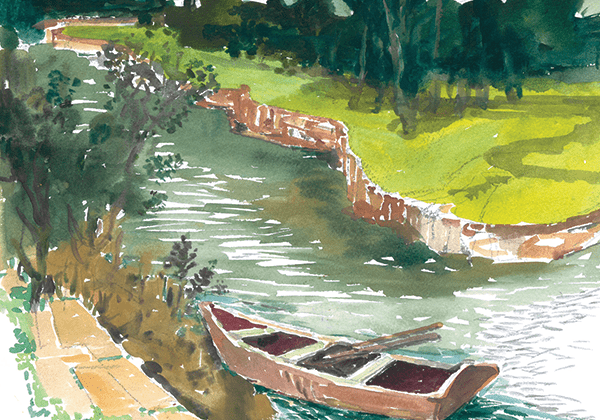The Cooks River holds a special place in my heart. I grew up alongside its cluttered depths; elusively beautiful. Sometimes it glittered blue and other times it smelt like rubbish. I used to roll down the miniature hills of Ewen Park, its playground and soccer fields located in the largely overlooked suburb of Hurlstone Park which cocoons the river — I still live there today. I celebrated many birthday parties at the wooden picnic benches that are dotted along the waterway and made some of my first childhood friends on the swing sets that are grounded amongst brown mulch chips.
My relationship with the Cooks River slowly waned as I grew older. Although I still had fond memories of the hours spent in Ewen Park, I now viewed the river as a space for recreation — to ride my bike or walk my dog and I think a lot of other people are similar. This understanding of the Cooks River has also been fuelled by the recent experience of COVID-19, which drove people out to explore their local parks and green spaces, as they realised that staying inside had its limits.
However, this has not always been the river’s main narrative. An enduring collective memory recognised by those who live in Sydney is one of floating shopping trolleys, an overpowering stench and murky brown depths. The Cooks River has an indisputable history of pollution. It has been dammed (and damned), used as a dump for toxic waste from the nearby factories and developed upon with the expansion of Mascot Airport and surrounding neighbourhoods built along the river.

I only began to learn more about the river’s secret past last year when I undertook a public history project with the Cooks River Alliance. I learnt that the Cooks River first and foremost belongs to the Gadigal, Wangal and Darug Peoples of the Eora nation, as well as the Gameygal people, who lived by the river and relied on it for sustenance and survival almost 20,000 years ago. Gum from different trees alongside the river was eaten at any time of the year. Medicines were made from plant oils of Eucalyptus, Boronia and mint.
With European invasion in the 1790s, the river became a place for recreation and sport. The idea of trading the dirtiness and ‘sin’ of the city for the tranquillity of nature was fulfilled at the bank of the Cooks River. Illegal boxing matches took place in the new pubs that popped up along the river in the 1850s. Hunting of deer and kangaroo was a popular sport, and hordes of young people swam, picnicked and skinny-dipped at bathing spots in the suburbs along the river (one bath was aptly named Starkey’s Corner). Annette Kellerman, a professional swimmer in the early 20th Century, frequented the river and was one of the first women to wear a swimming costume rather than pantaloons!
The little historical stories I read left me spellbound. From how limestone was discovered by burning oyster middens in the 1800s, a resource not previously available in Sydney, to the fact that the river was once so clean that visitors used its water to make tea.
I feel that the Cooks River deserves to have these stories told and to be heralded as an important place within Sydney’s history. As historian Anna Clark’s states, “place literally locates our individual and collective historical consciousness in the world around us.” These mementos shine a light on Sydney’s historical depth and provide a stronger connection to place and belonging. It’s something I feel that anchors my own identity and that I hope one day will be felt by all.





